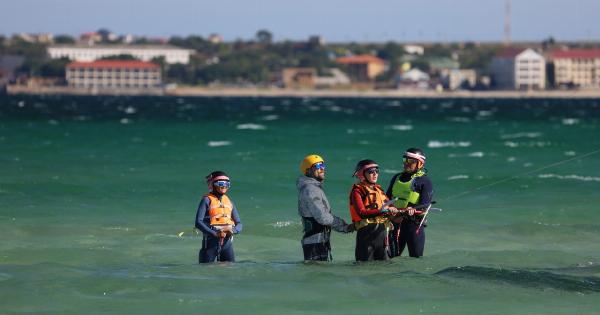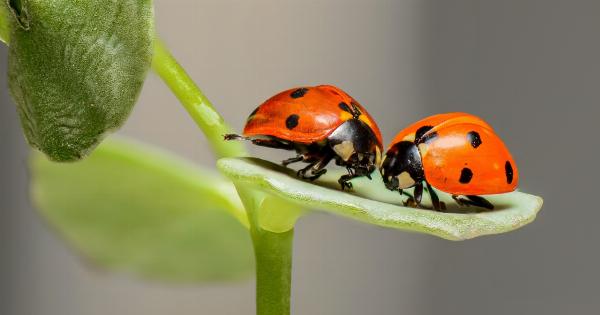Shellfish are fascinating creatures that live in our oceans, rivers, and lakes. They come in a variety of shapes, sizes, and colors, and they play an important role in our ecosystem.
In this guide, we will explore the wonders of shellfish and learn some interesting facts about them.
What are Shellfish?
Shellfish are a type of aquatic creature that has a shell to protect its soft body. They include animals like crabs, lobsters, clams, mussels, oysters, and shrimp.
These creatures are found in both saltwater and freshwater environments and are enjoyed by people all around the world.
Types of Shellfish
Let’s take a closer look at some of the most common types of shellfish:.
1. Crabs
Crabs are fascinating creatures with a hard exoskeleton and two large pincers. They use their pincers to catch prey and defend themselves. Crabs can be found in various colors and sizes, and they are known for walking sideways.
2. Lobsters
Lobsters are large marine crustaceans with a long body and muscular tail. They have two strong claws that they use to catch and crush their prey. Lobsters are considered a delicacy in many cuisines around the world.
3. Clams
Clams are bivalve mollusks that live buried in the sand or mud. They have a hard shell made up of two parts, and they can open and close it to protect themselves. Clams are filter feeders, meaning they pump water through their bodies to obtain food.
4. Mussels
Mussels are another type of bivalve mollusk that have a dark, elongated shell. They form clusters on rocks or other hard surfaces in bodies of water. Mussels are a popular seafood choice and are often enjoyed steamed or in soups.
5. Oysters
Oysters are bivalve mollusks that are known for their rough, irregular shells. They can be found in both saltwater and freshwater habitats. Oysters are often eaten raw or cooked and are considered a delicacy in many cultures.
6. Shrimp
Shrimp are small crustaceans that have a translucent body and long antenna. They can be found in both freshwater and saltwater environments.
Shrimp are a popular seafood choice and can be enjoyed in a variety of dishes, such as shrimp scampi or shrimp fried rice.
The Life Cycle of Shellfish
Shellfish go through a fascinating life cycle, starting as eggs and eventually growing into adults. Let’s discover the different stages of their life cycle:.
1. Egg Stage
Shellfish begin their lives as eggs. These eggs are often released into the water by the adult shellfish. Depending on the species, the eggs may be carried by ocean currents or stick to rocks or other surfaces until they hatch.
2. Larval Stage
Once the eggs hatch, the shellfish enter the larval stage. During this stage, they drift in the water and feed on microscopic organisms. Shellfish larvae are very tiny and fragile, and they need to find a suitable habitat to settle and grow.
3. Settlement Stage
After drifting for a period of time, shellfish larvae find a suitable spot to settle. They attach themselves to rocks, shells, or other hard surfaces and begin to grow into juveniles. This settlement stage is crucial for their survival.
4. Juvenile Stage
During the juvenile stage, the shellfish continue to grow and develop. They are still relatively small and vulnerable to predators. However, as they grow, their shells become stronger and provide more protection.
5. Adult Stage
Once the shellfish reach adulthood, they are capable of reproducing and continuing the life cycle. Adult shellfish are usually well adapted to their environment and have fully developed their characteristic features, such as claws or shells.
The Importance of Shellfish
Shellfish play a crucial role in maintaining a healthy ecosystem. Here are some reasons why they are important:.
1. Filter Feeders
Many shellfish are filter feeders, meaning they help clean the water by filtering out tiny particles and pollutants. They improve the water quality and create a healthier environment for other marine organisms.
2. Food Source
Shellfish are an important food source for many animals, including humans. They provide essential nutrients and are a delicious addition to various cuisines around the world. Fishing and farming shellfish also support local economies.
3. Habitat Creation
Some shellfish, like oysters or mussels, create habitats by forming clusters or attaching themselves to hard surfaces. These habitats provide shelter and protection for other organisms, such as small fish or crabs.
4. Biodiversity
Shellfish contribute to the overall biodiversity of aquatic ecosystems. Their presence supports a healthy balance within the ecosystem and ensures its stability.
Fun Facts about Shellfish
Here are some interesting facts about shellfish:.
1. Largest Crab Species
The Japanese spider crab holds the title for the largest crab species. It can have a leg span of up to 12 feet, making it quite impressive.
2. Pearls
Some oysters can produce pearls. When a foreign object, such as a grain of sand, enters their shell, the oyster covers it with layers of a substance called nacre, which eventually forms a pearl.
3. Lobster Lifespan
Lobsters can live for a surprisingly long time. Some lobsters have been known to live up to 100 years or more, making them one of the longest-living creatures on the planet.
4. Hermit Crabs and Shells
Hermit crabs do not have a hard exoskeleton like other crabs. Instead, they use empty shells to protect their soft abdomens. As they grow, they find larger shells to move into.
5. Oyster Reefs
Oyster reefs are not only important for marine life but also for protecting coastlines. Their complex structure helps reduce coastal erosion by absorbing wave energy.
Conclusion
Shellfish are fascinating creatures that enrich our oceans and provide many benefits to our ecosystem and society.
From crabs to mussels, each type of shellfish has its own unique characteristics and plays a vital role in the balance of aquatic environments. Exploring the wonders of shellfish can fuel a lifelong love and appreciation for these amazing creatures.































